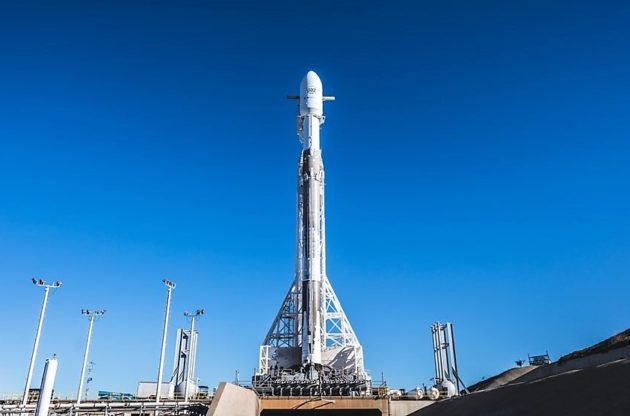Wednesday’s scrub, based on data from weather balloons, came only about 10 minutes before SpaceX’s Falcon 9 was due to lift off from Vandenberg Air Force Base in California.
“High-altitude wind shear data shows a probable 2 percent load exceedance,” SpaceX CEO Elon Musk explained in a tweet about the no-go decision. “Small, but better to be paranoid.”
The launch was rescheduled for 6:17 a.m. PT Thursday. Because the opportunity for liftoff is instantaneous, SpaceX has to have everything go right, to the second.
Assuming all systems are go, SpaceX will fire up a webcast of the proceedings about 15 minutes before launch.
Putting Hisdesat’s Paz spacecraft into orbit is the primary objective for this mission. It’s designed to follow the same orbit as Europe’s TerraSAR-X and TanDEM-X radar satellites, providing high-resolution radar coverage for government and commercial applications over the next five and a half years.
But it’s the secondary objectives that are really interesting. Riding along with Paz are the first two prototypes for what’s expected to become a SpaceX constellation of thousands of satellites. The constellation, known as Starlink, is designed to provide low-cost, low-latency broadband internet service from low Earth orbit.
Musk said Starlink would provide connectivity for those “least served” by currently available networks. “If anyone is curious, the name was inspired by ‘The Fault in Our Stars,'” he said in a tweet, referring to a romantic novel written by John Green.
SpaceX’s team in Redmond, Wash., has been playing a lead role in developing the hardware and the satellite communications technology for Starlink.
When SpaceX CEO Elon Musk unveiled the multibillion-dollar project in 2015 in Seattle, he said the revenue from the operation would be a key source of funding for SpaceX’s vision of building a city on Mars. Financial documents that leaked out to the Wall Street Journal last year suggest that Starlink is meant to be a key source of funding for SpaceX, period.
Because the satellite market is so competitive, SpaceX has said little about Starlink beyond what’s required by regulatory filings. According to those filings, the test mission involves having the satellites communicate with several of SpaceX’s ground and mobile stations, in Redmond as well as at SpaceX facilities in California and elsewhere.
SpaceX plans to start launching operational satellites next year, with an eye toward starting limited service by 2020. It has plenty of competitors in the developing market for low-Earth-orbit satellite internet access, including the OneWeb consortium, Telesat and perhaps even Boeing.
Beyond the satellite deployments, there’s one more big objective: an attempt to recover the fairing, or nose cone, that protects the Falcon 9’s payloads during ascent.
Falcon 9 fairings have typically been thrown away, but Musk figures that if they can be recovered and reused, SpaceX could save $6 million in mission costs. That represents almost 10 percent of the $62 million list price for a standard Falcon 9 launch.
For this launch, the two halves of the fairing have been equipped with attitude-control thrusters and parachutes. SpaceX has sent out a specially equipped ship, dubbed Mr. Steven, with a net that’s designed to serve as a “catcher’s mitt” for at least one of the falling pieces.
SpaceX’s first-stage boosters have typically been recovered. In fact, the booster for today’s launch previously flew last August, landed on a drone ship and was refurbished. That won’t happen this time. Because SpaceX is upgrading its Falcon 9 first stage, it has no intention of recycling the soon-to-be-outdated model.
Instead, the booster may end its career with a test aimed at seeing how it descends to the Pacific with a three-engine rocket blast to slow it down. That’s what SpaceX did last month in similar circumstances.
GeekWire
More about: SpaceX
















































